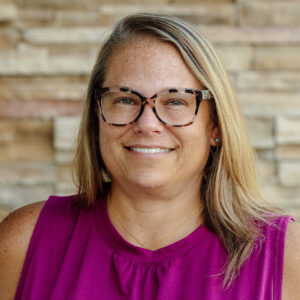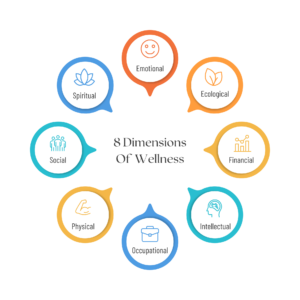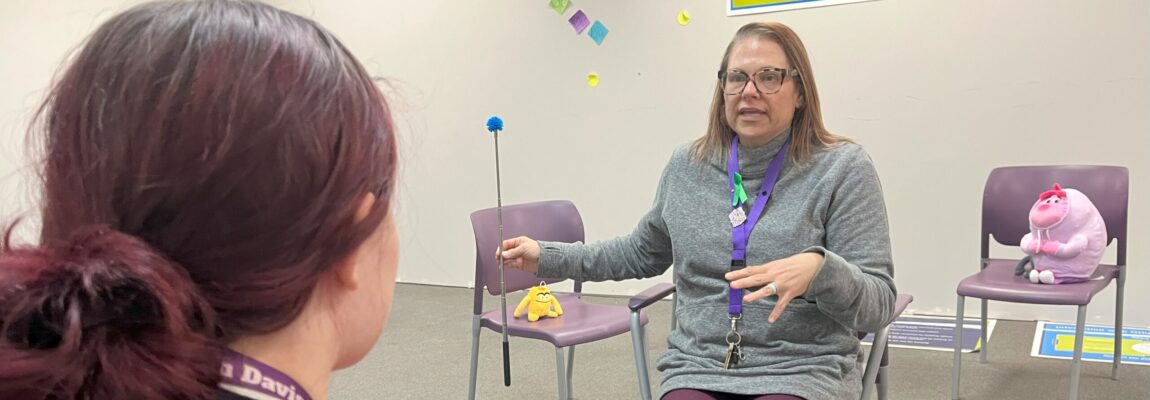Half of all mental health disorders begin before age 14. Yet, for many students struggling with substance use and emotional distress, access to therapy is limited by financial barriers, long waitlists, or the stigma surrounding mental health.

At Hope Academy, we believe that mental health support shouldn’t be a luxury—it’s essential. That’s why in 2024, thanks to a grant from Mental Health of America of Indiana, we brought on a full-time licensed clinical therapist, Erin Flick LCSW, LCAC, to provide immediate, onsite support to students and their families. One year later, the impact is undeniable.
- 170 students and families served
- 453 therapy sessions completed
- Holistic mental health care integrated into everyday school life
Hiring Flick has proven to help our students and their families reduce the many barriers that exist in accessing mental health care. And our first year of outcomes illustrate the tremendous reach and impact of having a full-time licensed clinical therapist on staff.
A Year of Growth and Healing
Research has shown that early interventions are essential for the greatest chance of success at this critical age of development.
In her work, Flick utilized the following therapeutic modalities:
- Individual and family talk-therapy
- Individual, family and group psychoeducation
- Brainspotting
- Life skills
- Case management
At Hope Academy, therapy wasn’t introduced just to address past challenges—but to build a sustainable future. The Substance Abuse and Mental Health Services Administration (SAMHSA) defines recovery as “a process of change through which individuals improve their health and wellness, live self-directed lives, and strive to reach their full potential. Recovery signals a dramatic shift in the expectation for positive outcomes for individuals who experience mental, and substance use conditions or the co-occurring of the two.”
Using SAMHSA’s definition of recovery, Flick worked with students and families to set personalized goals within its Four Dimensions of Recovery. In Health, students develop coping skills to manage stress and make healthy choices. Home focuses on creating stability through family support or safe living environments. Purpose helps students explore academic and career goals, while Community encourages meaningful connections through peer support, volunteering, or positive social activities.
The Impact: How Therapy Supports Student Success
Over the past year, our licensed therapist has helped students develop self-directed goals, improve emotional regulation, and strengthen their ability to navigate life beyond the classroom. Through individualized counseling and group therapy, students are seeing real, measurable progress in key areas of their lives.
Together with the students and families, they created and measured goals in correlation to SAMSHA’s 8 Dimensions of Wellness (Physical, Intellectual, Emotional, Spiritual, Financial, Occupational, Social, and Environmental).
Here are several observable outcomes correlated to student progress in active engagement in therapy.
Emotional:
- Healthier coping skills that support emotional regulation and stress management.
- A stronger sense of self-respect and self-esteem, leading to better decision-making.
- Effective communication strategies, improving relationships with family, teachers, and peers.
Financial:
- Obtaining and maintaining employment while taking financial responsibility.
- Developing budgeting skills to manage expenses and avoid impulsive purchases.
- Building a healthy and sustainable relationship with money.
Social:
- Developing a positive support network and building a recovery community.
- Learning to ask for help and repair harm in relationships.
- Establishing healthy boundaries and fostering self-identity and respect for others.
Spiritual:
- Identifying individual and family values.
- Identifying a recovery pathway and engagement in pathway resources.
- Experiential exposure to tools that reflect upon spirituality such as meditation.
Occupational:
- Identifying personal and family values to guide recovery.
- Engaging in a recovery pathway and utilizing supportive resources.
- Exploring spiritual tools such as meditation for reflection and growth.
Physical:
- Developing healthy habits through improved nutrition, sleep, and daily routines.
- Enhancing medication safety and preventive healthcare access.
- Increasing physical activity and practicing harm reduction in recovery.
Intellectual:
- Improving attendance and academic performance to stay on track for graduation.
- Supporting students in earning scholarships and pursuing post-secondary education.
- Providing opportunities for creative expression and career exploration (journaling, art, volunteering).
Environmental:
- Creating safety plans for home, school, work, and social environments.
- Identifying and managing behavioral triggers for emotional regulation.
The Lifelong Impact of Mental Health Support
One year in, the impact of integrated therapeutic services at Hope Academy is clear. Students are not just addressing substance use—they are progressing in all aspects of life. With access to consistent mental health support, they are rebuilding confidence, improving emotional regulation, excelling academically, and strengthening family relationships. These changes are laying the foundation for long-term stability and success.
Continued access to onsite mental health services is essential for sustaining this progress. With ongoing support from our community—students, families, educators, and donors—Hope Academy can continue to provide the resources needed for students to heal, grow, and build brighter futures.
Join us in supporting student wellness and recovery. Learn more about our impact and how you can help: https://www.hopeacademyrhs.org/donate/
